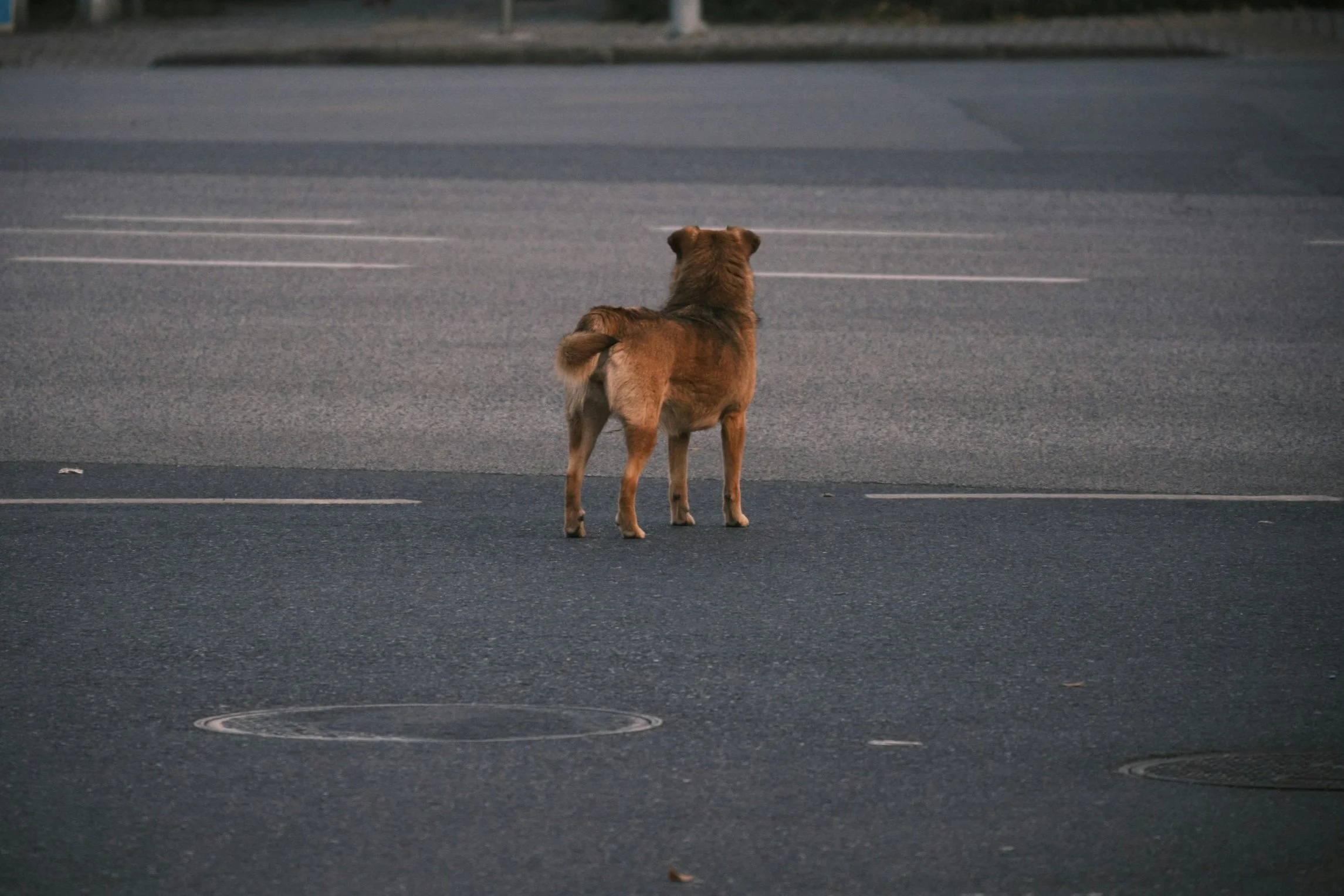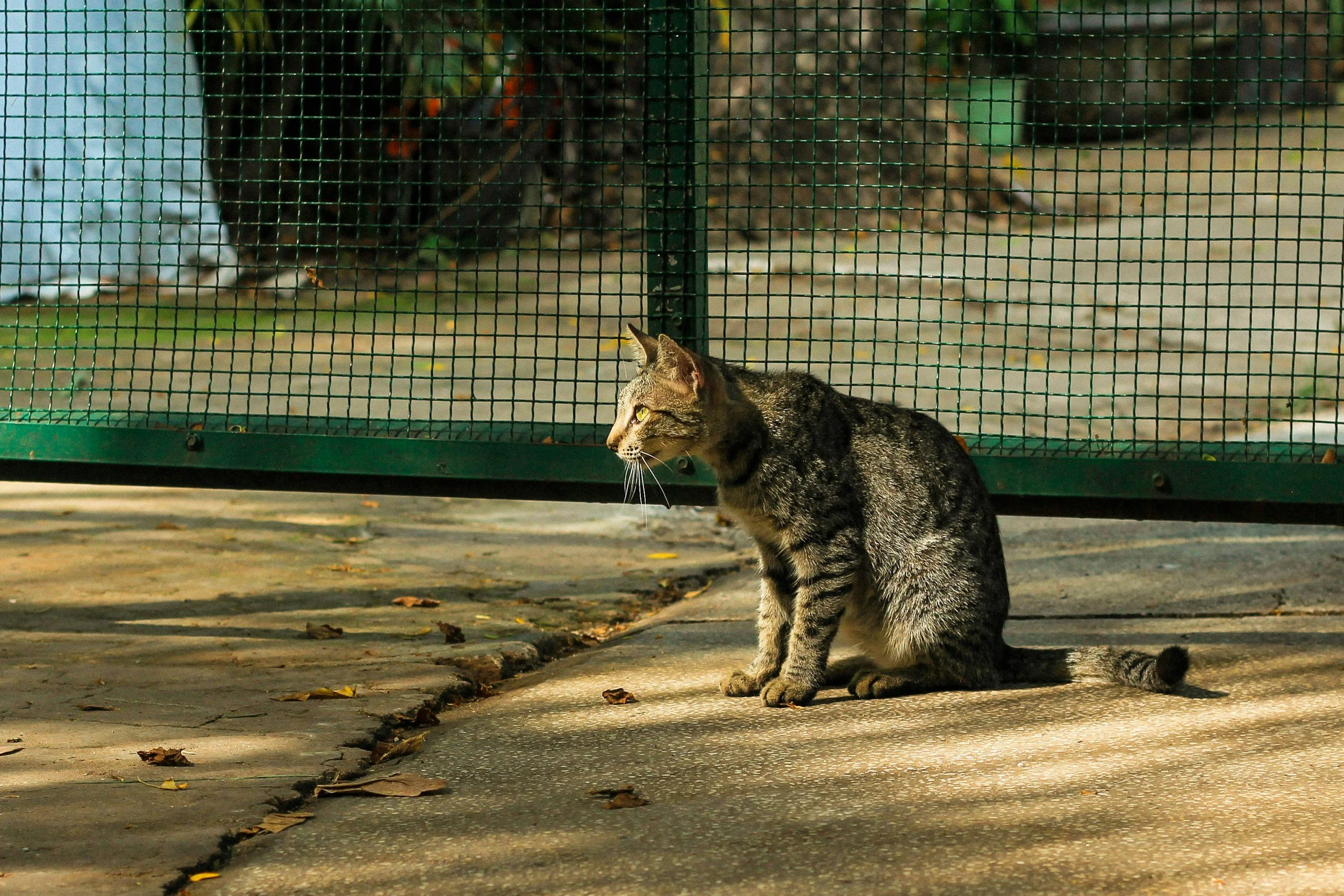Safe Companions
Keep Pets Safe—and Wildlife Too
Letting pets roam freely outdoors can put them in danger and harm local wildlife. Cats and dogs may be injured by cars or predators and can disrupt ecosystems by hunting birds and other small animals. Keeping pets indoors or securely contained protects both them and native species. Solutions include using leashes, catios, and reinforced fences that prevent digging, climbing, and squeezing through gaps. Adding bell collars and supervising outdoor time further reduces risks. With thoughtful care, you can give your pet a happy life while helping protect the natural world around you.
Letting your dog roam or giving your cat free rein outdoors might seem natural, but it can be risky—for your pet and the wildlife they encounter. Whether in a quiet neighborhood or the countryside, free-roaming pets can pose serious threats to birds, reptiles, and small mammals. At the same time, these pets are more vulnerable to injury, illness, and getting lost.
The good news? You don’t have to choose between your pet’s happiness and environmental responsibility. With the right tools and mindset, you can keep your pets and wild animalssafe, healthy, and thriving.
Why Pets Should Be Kept Secured
For the Health and Safety of Pets: Allowing pets to roam unsupervised exposes them to a range of dangers.
Cars and Traffic: Road accidents are a leading cause of injury and death for cats and dogs that roam.
Predators and Fights: Free-roaming pets may be attacked by coyotes, raccoons, other dogs/cats, or other animals.
Parasites and Disease: Outdoor exposure increases the risk of fleas, ticks, heartworm, and transmissible diseases.
Poisoning: Pets may ingest rodenticides, antifreeze, or toxic plants in the environment.
Getting Lost: Even pets with good recall or strong instincts can wander far from home and become disoriented or injured.
For the Protection of Wildlife: Cats and dogs are instinctual hunters. Even well-fed domestic pets will stalk and kill wild animals.
Cats are one of the leading human-related causes of bird mortality, killing an estimated 2.4 billion birds in the U.S. each year.
They also kill mammals, reptiles, amphibians, insects, and other species already under stress due to habitat loss.
Dogs may chase or injure ground-nesting birds, small mammals, turtles, or even fawns, disturbing delicate wildlife cycles and nesting sites.
By keeping pets contained, you're actively reducing pressure on local wildlife and helping ecosystems stay in balance.
How to Give Pets Outdoor Time—Safely
Your pets can still enjoy fresh air and enrichment—without becoming a threat to themselves or the environment.
Try a Catio (Outdoor Cat Enclosure): Catios are enclosed outdoor spaces that allow cats to enjoy the sights, smells, and sounds of nature without the risks of roaming.
They can be small window boxes or full backyard enclosures.
They protect cats from traffic, predators, and other cats, while keeping wildlife out of harm’s way.
They offer enrichment and mental stimulation, helping indoor cats stay active and content.
You can buy a premade catio, build one yourself, or modify an existing patio or porch with secure mesh or fencing.
Use Leashes, Fenced Yards, and Supervised Time:
Keep dogs leashed when hiking or walking, especially in areas with wildlife.
Supervise dogs in fenced yards or use long training leads to allow some freedom while maintaining control.
It's important to make sure your fence is truly secure. Many pets can jump, climb, or dig their way out of even seemingly safe enclosures.
Reinforce Your Fence
Prevent Digging:
Bury chicken wire or hardware cloth in an L-shape at the base of the fence, extending outward to block digging.
Lay down concrete pavers or garden edging to create a physical barrier.
Add thick shrubbery or raised beds along the fence line to discourage digging access.
Stop Climbing or Jumping:
Install a fence topper (like coyote rollers or angled mesh) to block climbers.
Increase fence height with lattice or vertical extensions.
Keep furniture, woodpiles, or other climbable objects away from the fence line.
Seal Gaps and Check Weak Points:
Fix or replace any loose boards, warped panels, or bent fencing.
Cover wide gaps with wire mesh or additional slats.
Ensure gates latch securely, and use self-closing hinges or rubber stoppers to prevent gaps.
Routine Checks Are Key:
Walk your fence line weekly to spot any new escape routes.
Watch your pet’s behavior for signs of escape attempts such as pacing, digging, or testing the perimeter.
A reinforced fence doesn’t just keep your pet in, it keeps wildlife out, reducing the risk of harmful interactions for both sides.
Added Protections
Even if you secure your pet, extra steps can help reduce wildlife conflicts:
Bell Collars: Attaching a bell to your pet’s collar helps alert birds and small animals to their presence. (Note: this is not a substitute for containment—it only reduces successful hunts, not all interactions.) Large predatory species, such as Coyotes and Bears, avoid animals wearing loud bells. These “Bear Bells” keeps your pet safe during hikes or walks in nature.
Brightly Colored Collars: Collars with bright colors or reflective tape can increase visibility and reduce surprise attacks.
Supervised Outdoor Time: Being present helps redirect unwanted behaviors, monitor interactions, and prevent trouble before it starts.
A Win-Win for Pets and Nature
Keeping your pets secured isn’t about limiting their freedom, it’s about expanding their safety and the well-being of everything around them. You’re giving them longer, healthier lives, while preserving the native wildlife and ecosystems that make our world rich and vibrant.
It’s one of the simplest and most meaningful steps we can take to live in harmony with nature.
Looking for inspiration? Build a catio. Reinforce your fence. Grab a bell for your pet’s collar. One small action can save many lives—starting with your own best friend’s.



